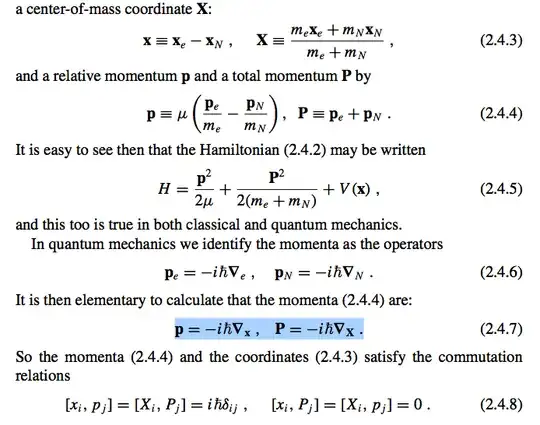Could anyone please tell me the proof of (2.4.7), using (2.4.6)?
Substituting (2.4.7) into the right equation of (2.4.4), we get:
$$P_1 = -i \hbar \left( \frac{\partial}{\partial x_{1e}} + \frac{\partial}{\partial x_{1N}} \right).$$
Also, substituting the right equation of (2.4.3) into the RHS of the right equation of (2.4.7), we get:
$$(-i \hbar \bf \nabla _{X} \rm )_1 = - i \hbar \frac{\partial}{\partial X_1} = - i \hbar \frac{\partial}{\frac{m_e \partial x_{1e} + m_N \partial x_{1N}}{m_e + m_N}} = - i \hbar (m_e + m_N) \frac{\partial}{m_e \partial x_{1e} + m_N \partial x_{1N}}.$$
Why we can say these are equal?
